Quick Links
Content optimization best practices are always changing and evolving. That’s why it’s vital to keep up with how Google understands keywords and content so you can compete with your competitors.
The cold hard truth is so many other businesses are marketing their products and services just like you are, so you may not win a link even if your products deserve it.
So, how do you start getting high DA, natural links to your site? You need something worthy of linking to!
By creating quality content and using topical SEO to optimize it, you can begin the process of internal link building to your product pages to keep the traffic consistently flowing.
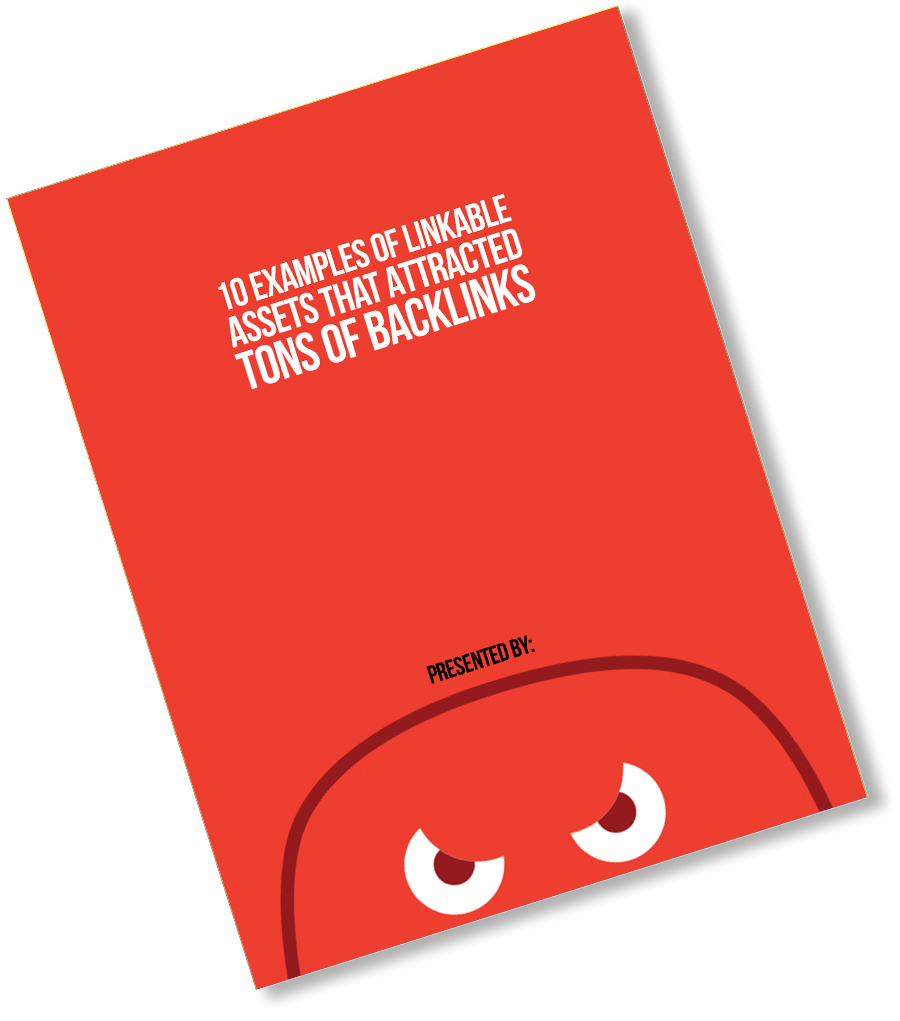
-
Want to see 10 more examples of linkable assets that attracted TONS of backlinks?
Click below and input your email. We’ll send it right over!
Let’s begin a walk-through of what is quality content, what topical SEO is, and show you some examples of highly linkable content so you can start attracting those holy grail links!
Ready? Let’s go!
How Google’s Algorithms Are Changing and Why It Matters
SEO has traditionally focused on optimizing content for specific target keywords. Common SEO advice would be to create content and pages based on 1 specific keyword.
Other old-school SEO practices also include dividing up pages based on different keywords. For instance, having one page for “guitar chords” and another page for “guitar tabs” even though the user intent is the same.
But with all the new updates to Google’s search algorithms (thanks to machine learning and AI), Google’s search standards have changed over time and SEO basics don’t work like they used to. That’s one of the reasons it’s so important to stay updated on Google’s SEO changes.
Because Google’s organic search is responsible for 59.2% of the world’s web traffic, Google’s ultimate goal is to match the user query with the best possible answer.
In the past, Google would do that by using keywords, basic SEO content, and links as a way of matching which is still true to an extent. But, that presented some problems that we’ve seen them try to tackle in the last decade.
So, Google set out on a mission to create new ways of rating a piece of content. They want to be able to rate that content on a scale of how likely it is to answer that user’s query.
As a result, Google has developed algorithms to understand the connections between words, entities, topics, etc so they can understand the search intent.
Hummingbird, which was one of Google’s major updates that rolled out in 2013, became a total rewrite of Google’s algorithm. This update made Google able to understand the connections between entities and natural language search, analyzing and ranking content in terms of topics instead of relying on exact match keywords.
Google’s BERT update was released in 2019 and is considered the largest change since RankBrain. BERT made serious changes to the way Google’s AI treats the intent of search queries better. It’s the newest update for Google’s algorithm but isn’t expected to be the last.
Actually, most Google experts estimate that Google’s search algorithm changes around 500 to 600 times a year! That’s at least a couple of times a day.
While most of these changes don’t make much of a difference, some updates change SEO significantly.
What Is Topical Authority?
In essence, Google places value on a source’s authority as a subject matter expert. That is, how deep and comprehensive a source’s coverage of a certain niche is.
In practice, it means your site should be filled with content that effectively answers all possible questions a user may have about a certain topic, concept, or subject that you are targeting.
What’s more intriguing, topical optimization could potentially be a more powerful ranking factor than keyword optimization and backlinks combined if used correctly.
Topical Authority best practices
Here are some good practices for topical SEO:
- Stay relevant to your topic
- Use Google as a tool for keyword research
- Do a topical analysis
- Build topic clusters
This part may seem a little obvious; however, staying on topic and keeping relevance to a search query is super important for Google’s crawlers.
You can always use a free Chrome Extension called Keywords Everywhere, which I’ve used myself for research. Keywords Everywhere pulls different keywords from Google’s API and show you their search volume. In addition, you can also use our free SEO tool The HOTH’s Free Google Keyword Planner.
Topical clusters are simply groups of related content that collectively cover a larger subject. They also create a strong internal link building foundation.
What is Quality Content?
The term “high-quality content” gets thrown around so much in the SEO community that it can almost make you roll your eyes.
So let’s get down to the nitty-gritty – what exactly is quality content and can you create it for a great user experience?
In this context, your digital marketing goal is to get links to your site, improve organic traffic, and reduce bounce rate, so let’s break down what types of content actually achieve that.
Simply put, great content that is high quality is content creation that answers essential questions being asked by the target audience, provides research, important news, or presents a controversial opinion.
Quality content pieces are linkable assets on your site that are so good other websites naturally refer their audiences to them.
Let’s break down the top content writing types that attract links:
How to Write Quality Content
One of the largest challenges that businesses and bloggers face is writing content that’s both appealing to people and optimized for search engines.
It makes your content both interesting and optimized, your website needs to go above and beyond just writing content. Your posts need to accomplish two goals. To solve a problem, and keep your audience engaged. That is sometimes easier said than done.
Here are some tips for writing great, high-quality content:
- News content, infographics, or updates on new products and developments
- Authoritative content that answers questions people search, like “What is [topic]”
- Controversial opinion pieces that take a stand on one side of an argument
- Original research that provides unique insights
- Content that centers around a trending topic and provides practical information
All these types of content are both high ranking, shareable, linkable, and hold value to your marketing strategy.
Let me give you some examples and explain how they work:
Authoritative content
Try creating content that answers questions people actually want to know more about. Authoritative content such as ultimate guides and “how-to” articles are referred to often by publishers.
Actually, 78% of consumers tend to trust a brand more if they create more customized content.
Why is this the case? Because authoritative content tends to provide valuable information in a way that makes it easy to reference.
Editors don’t mind linking to this content because it provides their readers with additional value and help you appear in organic search results.
Let’s say you wanted a link from a publisher like Forbes: a website with high domain authority that has high search engine rankings and thus a high-quality backlink for your site to get.
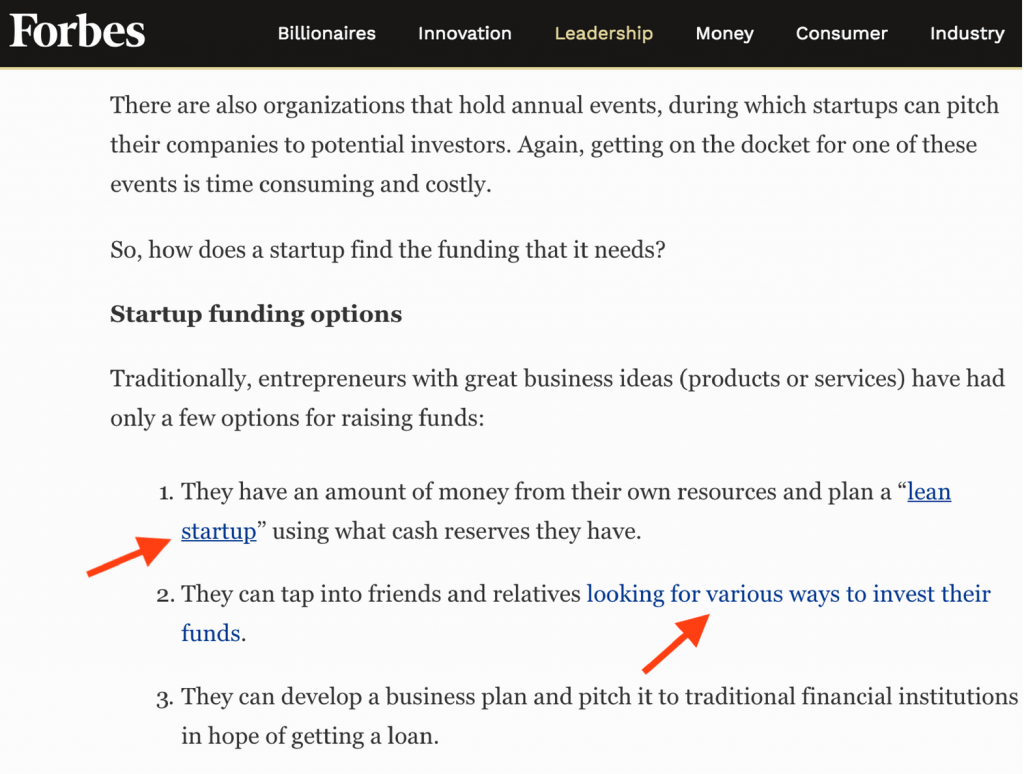
The HOTH offers a Domain Authority Checker Tool to help you determine metrics and what sites have the best DA and rank on results pages. You can also check your metrics by using Google’s Search Console and Analytics.
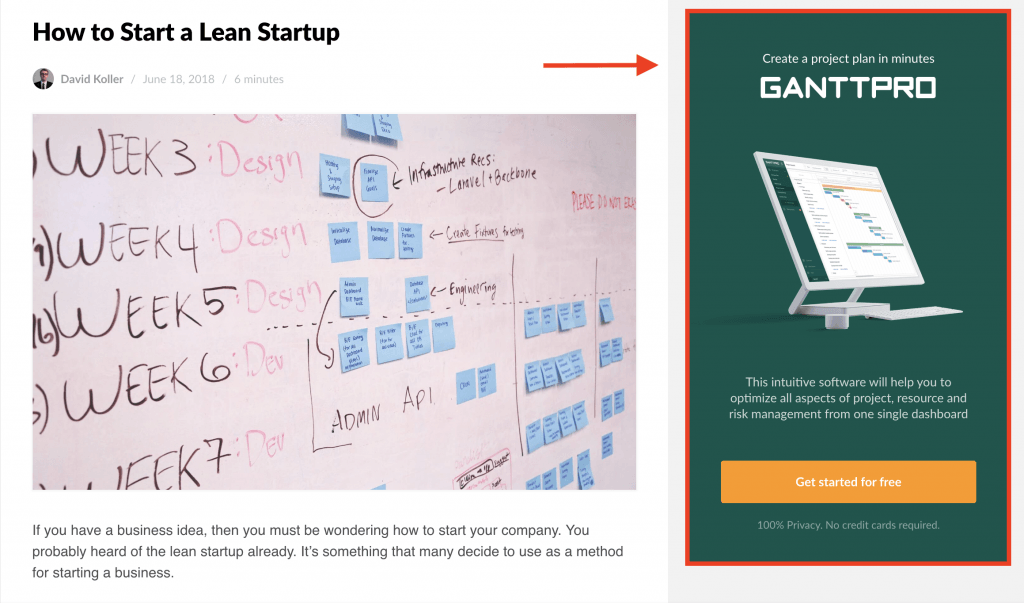
This is the content strategy for getting great backlinks in play:
Not only do you get a boost from the link, but any traffic that clicks through to your content also can continue on to your sales content!
You’ll get more backlinks and thus more traffic and sales by putting up authoritative content on your site and making it easy to find your products from that page.
Controversial Opinion Content
Depending on your niche or industry, there are topics under debate that people may fall sharply on either side of.
You can take advantage of the emotional component of taking a stand and write a piece that argues for one side. This may be a risky SEO strategy but can work for some businesses.
This gets linked to by searchers and from people who agree and even those who don’t agree but want to present an opposing view to their audience.
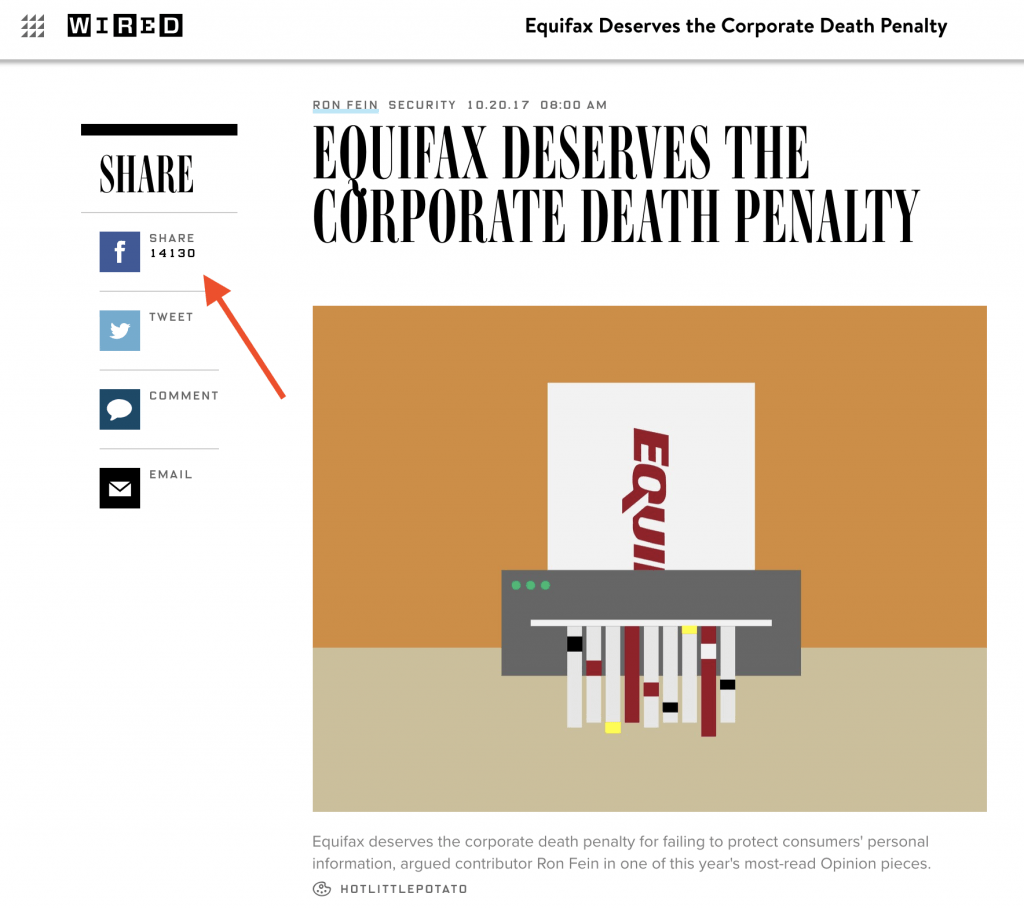
Extra points if you can present a controversial opinion on a trending topic. It is probably best to research the best ways to be controversial without causing any company problems to your business.
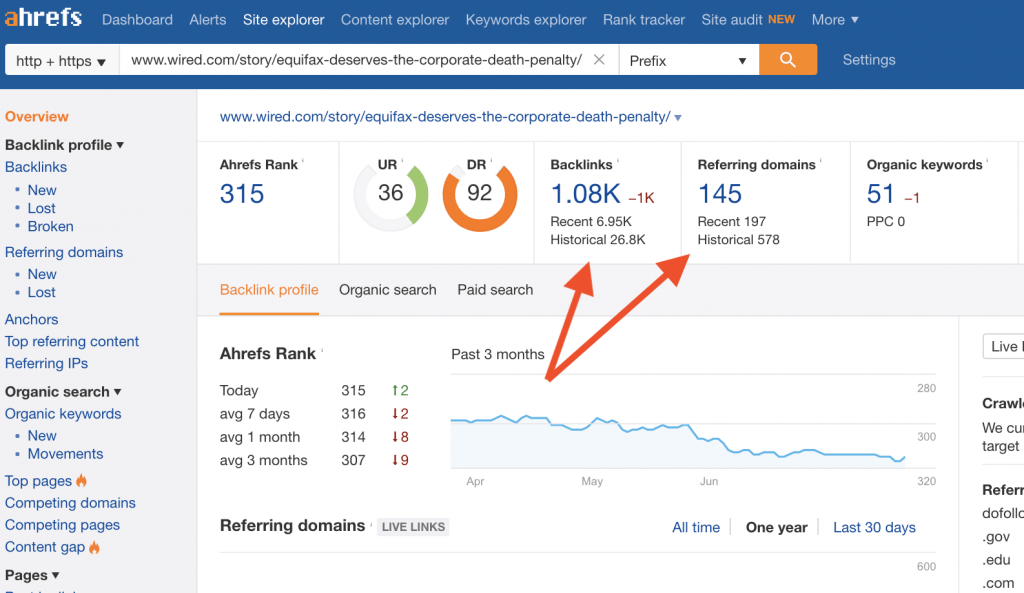
You don’t necessarily need to be this dramatic in your piece, though the emotional response it gets can help your DA and trustworthiness.
An argumentative piece can be as simple as stating your opinion on problems that your audience is having and calling those problems out.
Research content
Research pieces present information in a useful and numbers-driven way. Like authoritative pieces, research content answers questions, but you answer those questions by using hard evidence to back it up.
Research content can take a number of forms. For example, you can conduct original research to present statistics, data, and analysis that offer unique insights.
You can also aggregate a number of research pieces from external sources and generate a new “study on the studies.”
For example, a case study by SearchEngineLand on how Google reviews impact local SEO rankings managed to attract a large number of backlinks in a matter of days.
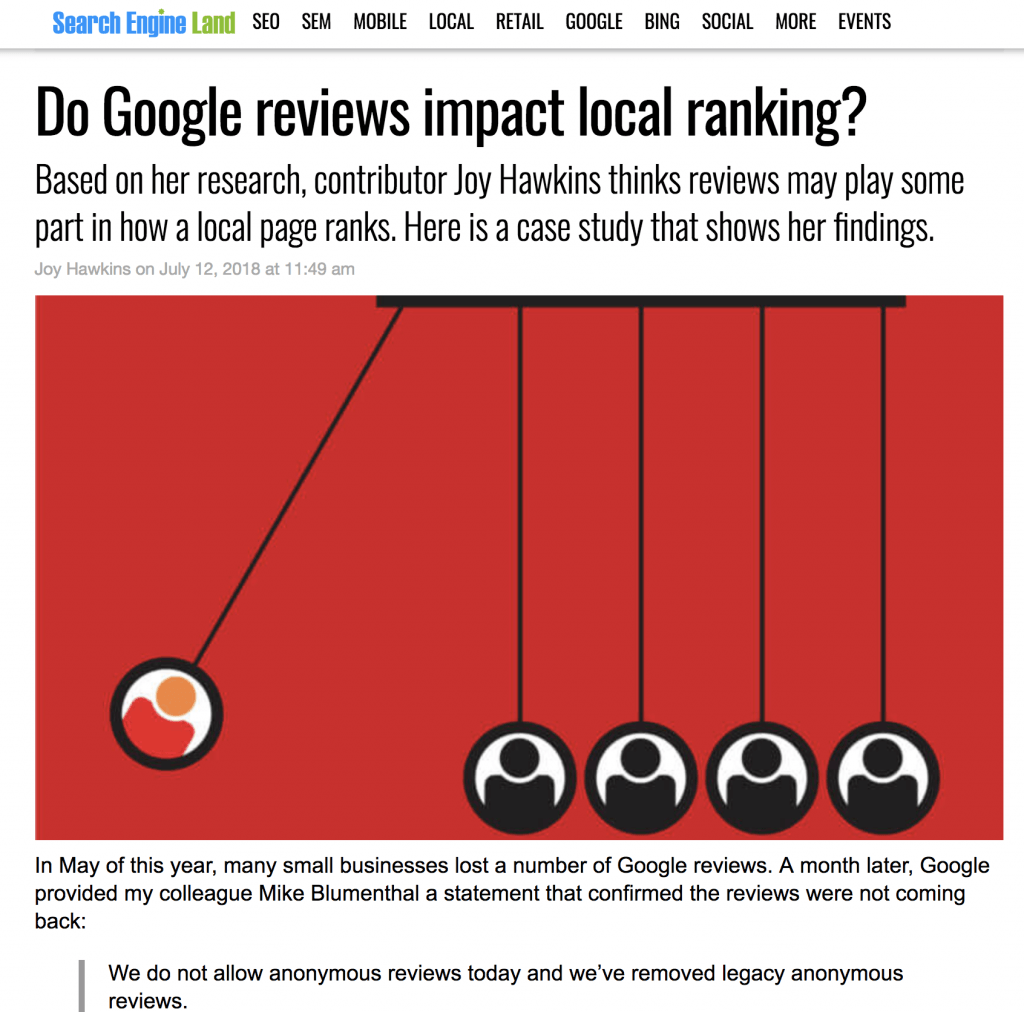
If you do the work to come up with meaningful statistics that provide insights into your niche topic, this research content is primed to serve as a reference and get backlinks.
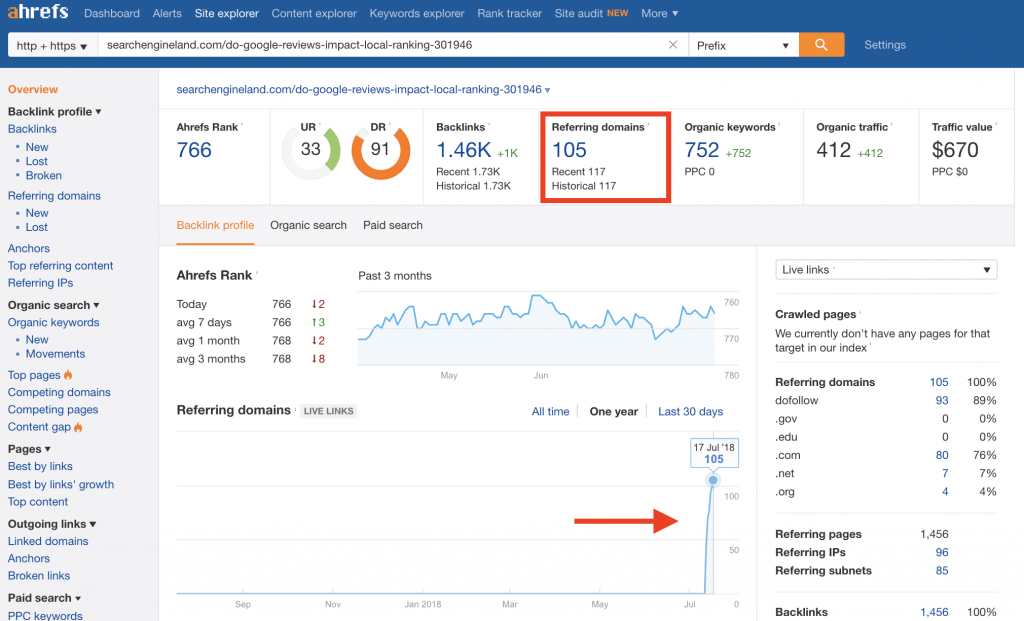
News, updates, and trending topic content
If something new comes out or there is a trend on the rise, your ability to provide news or updates to the audience can come in handy.
Whenever Apple comes out with a new version of the iPhone, you can be sure that about 10 million+ pieces of content will come out to talk about it. But you can provide an update on something more specific to your niche.
For example, we keep our readers up to date on Google’s Update history.
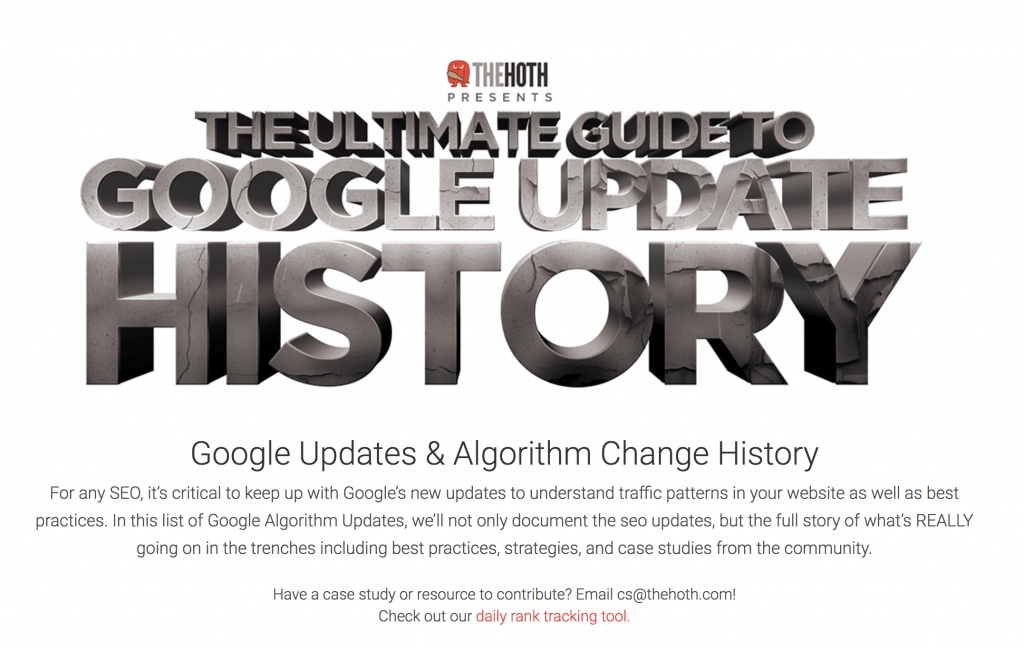
This page has received a steadily increasing number of referring domains:
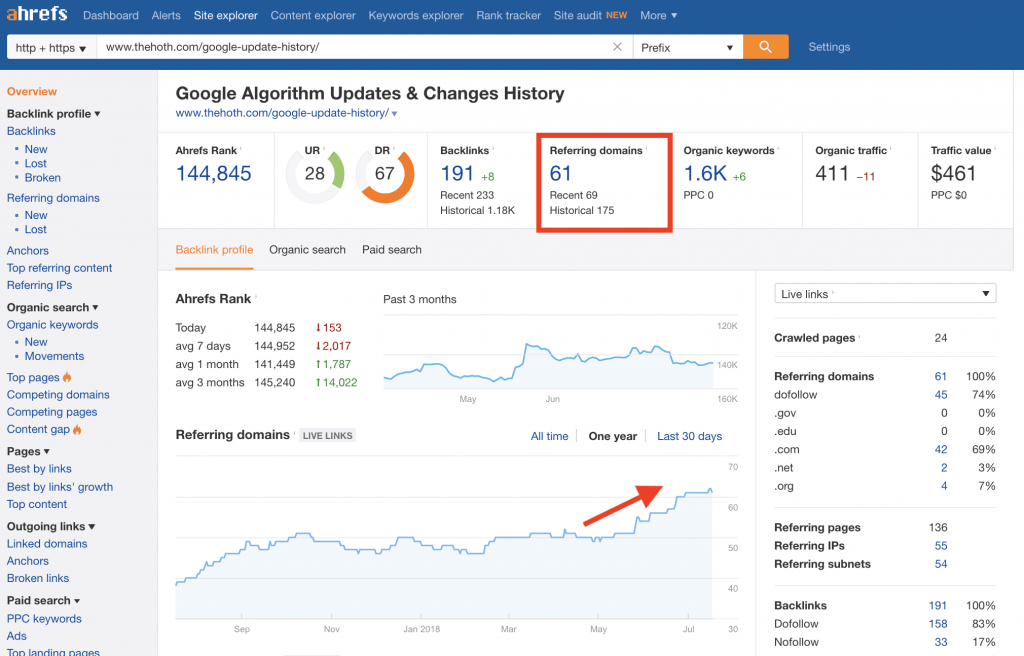
Now you have an overview of the quality content that works to get quality backlinks to your site!
If you want to try a tool that helps you come up with ideas for content, try our Headline Generator Tool.
How To Find User Questions and Answer Them
To get an article to rank higher for a target topic, you first have to identify the most popular kinds of questions people ask about it.
Here’s how:
Use Google to find questions
Let me use a random SEO keyword phrase as an example.
Go to Google and type “mobile SEO.”
Head straight for the “people also ask” section.
From these results, you get a basic idea of the top things people want to know about mobile SEO, such as:
- What is mobile SEO?
- What does it mean to make your website mobile friendly?
- How can you make your website SEO friendly?
- Why is mobile SEO important?
You can also look at the related searches section.
Since the related searches section looks more like keywords than actual queries (questions), you have to interpret what the user intent is based on these keywords. Doing so will let you form new question phrases you can add to your list of queries.
For example, when you see the keywords “mobile SEO Google”, it is unlikely that the user cares about whether or not Google has optimized its website for mobile SEO.
Probably, they are curious about:
- What is Google’s take on mobile SEO?
- How important is mobile SEO to Google?
- What tools & tests can I run to make sure my website is mobile optimized?
- What is the current state of mobile SEO?
Obviously, this process is more subjective than a perfect science, so try to be as comprehensive as you can. You can clean up any clutter later.
Collect all the queries you’ve gathered so far based on the People Also Ask section, including question interpretations based on keywords in the Related Searches section.
Now, not all searches come with the people also ask box, though, and you wouldn’t want to limit your ideas to a single platform, so a good additional source for fielding question ideas would be Q&A sites. For example, Quora.
Use Quora to find user questions
Quora is a community-curated question-and-answer site with around 100 million users. Quora is known to prioritize the quality of answers over volume, which makes it a better place for us to harvest our query ideas.
Again, let’s use mobile SEO as an example again. Type “mobile” SEO.
Go to the right navigation bar and click “Questions.”
This filters the results so you’ll see all the questions ever asked in the Quora community about your keyword.
You can also see info such as the date it was posted, number of follows, views, and comments, which lets you know how important those questions are to the users, which means they may be valid ideas for content creation.
When you flesh out a topic in-depth, you’ll have a much better chance of ranking, as well as the opportunity to rank for many more keywords!
As you can see, the idea is pretty straightforward: Pick a topic, find all the questions related to the topic, answer these questions fully, and publish your article!
If you’d like to learn more about how we can help you do this, you can check out our Blogger Service.
Refine your questions
Now that you have your initial list of questions, it’s time to whittle them down into those that make the most sense to tackle in your article.
First, pick the ones that you think are the most pressing questions for your target audience and weed out the ones that are not relevant.
For example, your target audience is business website owners trying to decide whether they should invest in mobile SEO for their websites. So the questions from Quora about using switchboard tags for mobile SEO, as well as other questions relating to back-end development for SEO, are best saved for an article targeted at developers.
Next, your goal is to produce content that is “evergreen”, so don’t include time-sensitive queries, such as “why is mobile SEO important for 2022?” or “Is there a brilliant mobile SEO checklist for 2022?”. The average lifespan of a blog post is about 30 days, however, some high-quality posts can stay on Google’s top rank for 2-3 years, so it is best to keep your content up to date but not date sensitive.
Third, there may be some redundancies where you have queries that are phrased differently, but that lead to the same answer.
Let’s explore this example, the questions “Where can I find mobile SEO tutorials?” and “Which are the best websites for learning mobile SEO?” are looking for pretty much the same things, so just combine them.
Lastly, there might be some questions you want to edit on account of them having typos, being unnecessarily long-winded, or which need to be rephrased for better clarity.
How To Classify User Intent Of Your Questions
Now that you’ve refined the list of questions to tackle, it’s time to classify your questions by user intent type to help you organize the order of the questions in the article.
For this article about mobile SEO, you only need to concern yourself with two user intent types:
- Informational – where the user is looking to find specific information; and
- Transactional – where the user’s intent is to complete an action such as to purchase, download, register, or sign up for something.
It would be best to create some notes for informational and transactional-type questions.
With that bit done, it’s time to build your article structure according to the order of questions you should address. This can include headings and subheadings such as H1, H2, and H3.
How To Structure Your Article Using The Questions You’ve Gathered
To earn the reader’s trust, begin the article by answering questions that provide specific information, starting from the broader questions followed by the more detailed ones.
Follow or pair these with the relevant transactional questions to create an article that could provide real monetary value either through affiliate links or by pitching your own services.
For example, the question “What is mobile SEO?” Is the most encompassing of all the questions and should be the first header.
- A detailed question that should fall under this first header could be:
What are the differences between desktop SEO and mobile SEO?
Other broad questions that should serve as main headers for your article are:
- Why is mobile SEO important?
- How effective is mobile SEO?
- How can you make your website mobile SEO friendly?
When you’re done organizing, you should end up with an article framework that can help you engage your audience, and answer any questions they may have on that particular topic.
How To Start Getting Free Links
What’s awesome about starting with linkable content is that over time, you can start to attract free links naturally!
Once your content starts to rank, it’ll be seen more in search results and attract additional links as a result of the increased exposure.
Why does it work? Because your content is an easy-to-find reference!
For example, journalists write articles and need content to refer to that supports their piece. They might look for examples, answers, quotes, and studies.
If you rank at the top of the results and provide what they need in your content, it’ll be you they refer to.
This is the SEO version of “the rich get richer.”
So you essentially multiply the value of your content by getting free links in this way.
How do you start getting some free links?
Rather than just sit there and wait, there a few simple things you can do to kickstart the number of links your content is getting.
Promotion
Promotion is a key tactic to getting the initial links that you need to rank.
To get started promoting your new content, share it on social media and tag prominent people in the post who might be interested in it. If those people decide to share your content, your reach can grow exponentially.
Thank you! The new #Digitalscoutings Top 100 #SocialMedia and #Marketing #Influencer #ranking is out. Thank you all for your #inspiration and support! https://t.co/xQoPG7rMnc @davekerpen @madalynsklar @guykawasaki @hnshah #AI #ML #VR #AR #BigData #iot #Cloud #smm /Team pic.twitter.com/2Bk4brRPsp
— 🔹Dr. Robin Kiera🔹 (@stratorob) July 12, 2018
You can also try taking out a press release and sharing it with news organizations as another promotion tactic.
You can also try taking out a press release and sharing it with news organizations as another promotion tactic.
Outreach
Do some direct outreach. If you want your piece to get a link from someone prominent, why not reach out to let them know you made it?
If they check out your content and like it, that’s free promotion for your piece.
There are different ways to do it, such as through email or social media messaging. You can even use The HOTH’s Backlink Checker Tool to see what sites are giving particular kinds of links.
Influencers are inundated with requests for links. So don’t even ask for the link. Just make them aware of the content.
For example, we emailed Brian Dean to let him know that we mentioned him in a piece of content about blogger outreach and he shared it on Growth Hackers.This earned us a backlink and an additional 3k views from our target audience of online marketers.
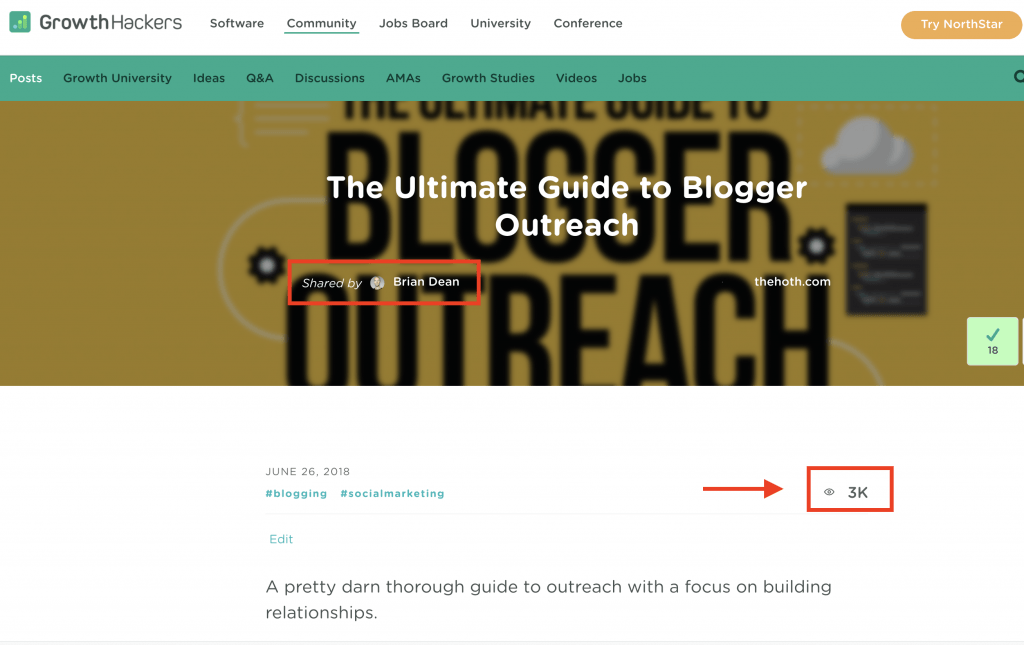
We were then contacted by a podcast for an interview on the Blogger Outreach article.
Being on this podcast earned us yet another link from the episode’s page, along with traffic from the show’s listeners.
Link Submission
You can submit your content to relevant sites as part of a promotion strategy, including:
- Growth Hackers (Marketing)
- Hacker News (Tech)
- Slashdot (Tech)
- Quora (General)
- Reddit (General)
- HubPages (General)
- Blog Engage (General)
There are more submission sites out there, and some are relevant only to specific industries. Submit where it makes sense for you.
How To Interlink For More Sales
So you have the quality content piece. You’ve promoted it to get some initial links pointing to it from other sites.
Now you want the traffic and link juice to flow to your product page – and you do that by internally linking!
When you link from your standout content piece to your sales pages, you can turn that traffic into purchases which boosts your conversion rates.
As I mentioned in the beginning, this is the better strategy for getting people to your product pages, since product pages don’t attract a lot of links.
Internally linking can actually help your product pages rank as well!
This case study from Ninja Outreach shows how internal linking increases traffic.
This one resulted in 40% more traffic as a result of strategically placed internal links:
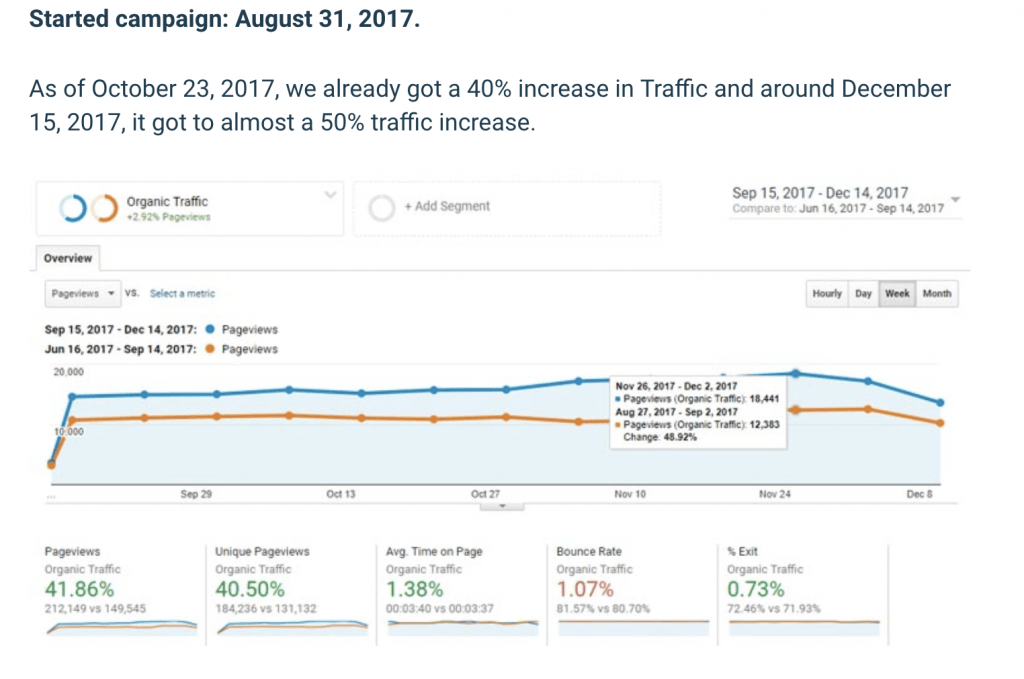
Interlinking also provides opportunities to turn traffic into sales.
Why does this work? People who search for terms like the ones you’d use to create quality content are often midway in the customer buying cycle. They just need a bit of a push to start considering a purchase.
Here’s an example from our own site. Let’s say someone is looking to get links with blogger outreach:
- Someone searches for how to do outreach and lands on our guide for doing blogger outreach
- They read the article and learn some valuable knowledge they were looking for
- They like and trust us for sharing that useful info
- I’d first like to mention that we provide a guest posting service/blogger outreach service and link them to our Guest Posting sales page.
- Both pages get an SEO benefit, and the traffic that landed on the guide turns into customers after being sold on a solution to their problem!
Sure, some might use the information and leave. But if they are a busy business owner who would be a good prospect for us, chances are they’ll read this article and realize that outreach and guest posting is a lot of work and we can help.
So we make sure to mention our guest posting service at the beginning and end of the article to ensure that they at least check it out.

-
Want to see 10 more examples of linkable assets that attracted TONS of backlinks?
Click below and input your email. We’ll send it right over!
Let’s Wind It Down
That’s a ton of information, am I right?
Quality content and topical SEO can be a little confusing, especially for anyone just starting out or who doesn’t have the time to boost their website or business as much as they’d like to.
That’s okay if you’re a bit overwhelmed, we got you!
Now that you’re able to confidently answer the question “what is quality content?” you’re ready to take the next step. Don’t hesitate to reach out to one of our professionals for any SEO or PPC questions you may have.







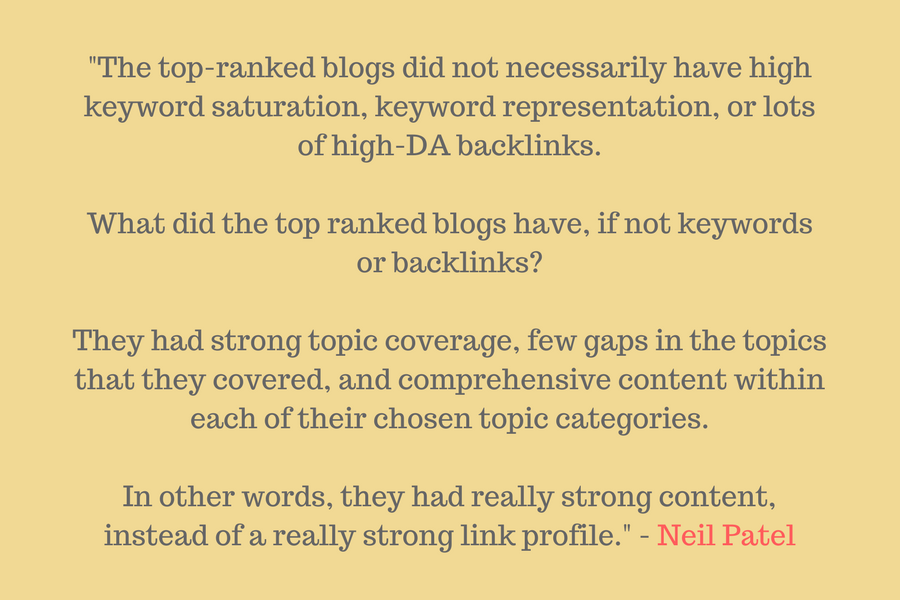
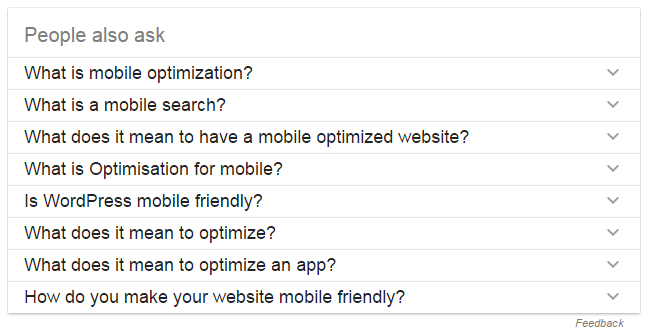

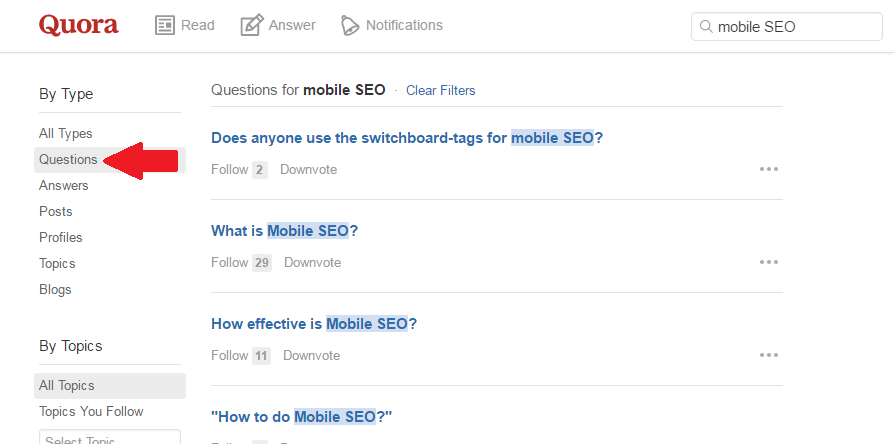


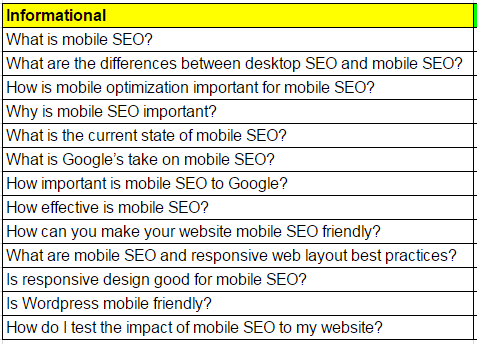

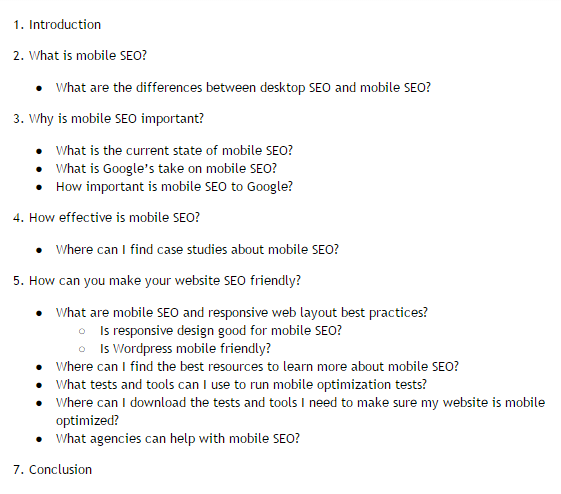


Thanks for the valuable information. I am already on Quora and Reddit…and working to create link-worthy content now! :p
Awesome, best of luck with your project Roshan.
Gret piece of content, it talks about exactly what I was looking for, which is creating linkable assets on my website through a simple a process. Keep up the good work.
Awesome, thanks Ali!
Thank you for the great article, great ideas to get natural backlinks.
Toda raba, Yaniv! Hope you get some nice backlinks!
Hello
Nice information
Still, I have one question that how to get dofollow links??
Please share your thoughts.
Great question. I think you’ll like this guide: https://www.thehoth.com/blog/build-100-backlinks/
Getting free back links from great content sounds great in theory but is complete bs for most industries. Especially from Forbes. Most are consumers with no sites.
Well, the backlinks don’t always come on their own. Often to get the best links to your content, you need to do some outreach to people and ask them to link to your piece. If your content is relevant and good, you can get a backlink from a topically adjacent piece. And for smaller sites with lower quality, the links they attract will likely be of lower quality. So I think that along with quality the brand equity of the site comes into play.
Your posts are ones that I can never miss! Keep it up! Kudos!
Thanks!
Thanks for sharing the information about What is Quality Content. Keep Sharing Such information
Thanks for the information. I am off to apply it straight away.
Indeed, content is important. But a little outreach goes a long way. Thanks for sharing.
Thanks for great link building article Clayton!
This the best strategy I can use to build quality backlink.
Thanks for indepth analysis and valuable content!
Awesome article Christian, full with valuable information! The article framework is killer. Cheers, David
As a content creator, This helped me alot. Keep up the good work. Thank you for this valuable information.
Content is the key in marketing, and to optimize it, it is essential to see what your content is about and is it relevant to your website?
your blog is useful to me and I follow up your blog day to day
Thank you for sharing a great article. More information collected
Thank you for sharing this valuable information keep going
Thank you for sharing a great article. More information collected
Content is the key in marketing, and to optimize it, it is essential to see what your content is about and is it relevant to your website?
Do you prioritise a diverse set of anchor texts in your backlink profile?